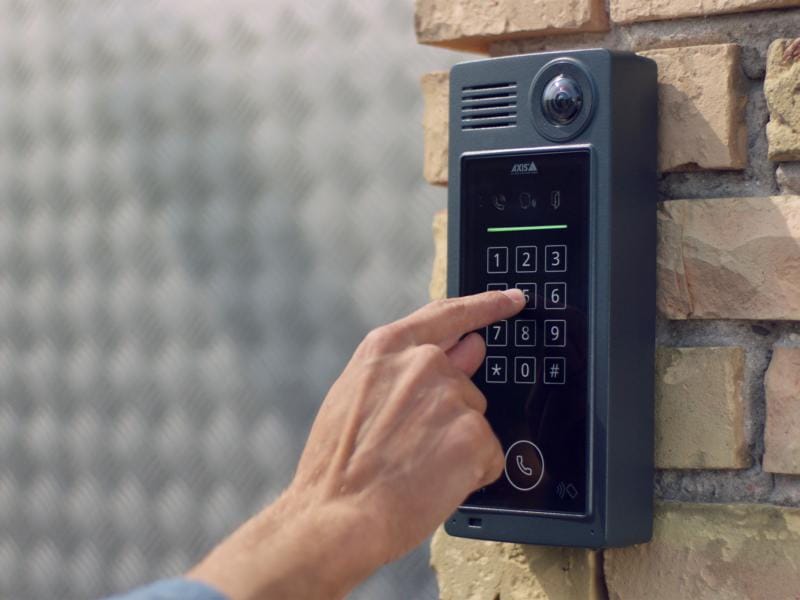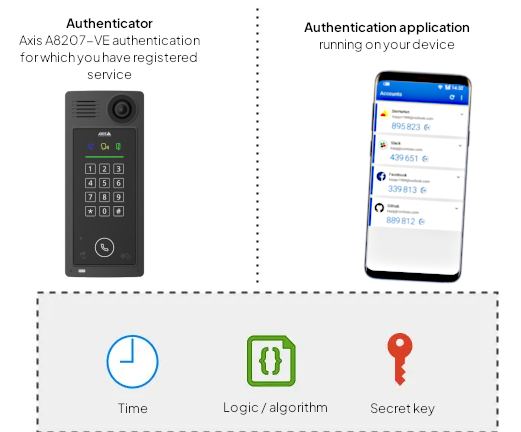PIN has died! Long live Q-PIN!

Access control systems such as the versatile AXIS A8207-VE are a key component of security management in many institutions, businesses, as well as residential buildings. And one of the most common methods of user identification is the use of Personal Identification Number or the popular PIN. The PIN is a simple but effective method of access authorization. Also secure as long as we use the right tools.
Principle of operation of PIN-based access control system
PIN-based systems work by the user entering a unique code, which is then compared to a database stored in an access control system or intercom such as the AXIS A8207-VE. If the code entered matches the one stored in the database, the system opens access to the room. Such a method is relatively easy to implement and does not require sophisticated hardware - all that is needed is a numeric keypad and an electric strike mechanism.
Disadvantages and limitations of PIN-based systems
The use of a static PIN carries quite a few dangers, which is why in many cases it should not be the only identification element. What can be said: short PIN codes can be relatively easy to guess for unauthorized people, especially if users choose simple combinations such as "1234" or "0000." Complicated and longer codes, on the other hand, are forgotten by users, leading to difficult access. Well, and the PIN does not uniquely identify the user, which can be a problem in cases requiring a high level of security.
Time-varying Q-PIN - that's it!
What if the PIN was changeable over time? Applications such as MS Authenticator or Google Authenticator, which provide dynamic Q-PINs, come to the rescue. This is because unlike static codes, dynamic Q-PINs eliminate the risk of copying credentials. In addition, access to the MS Authenticator or Google Authenticator application itself can be protected by biometrics, which provides higher security.
PIN codes are still the most popular type of authentication. Compared to traditional access cards, they offer a secure, economical, convenient and sustainable way to manage an access control system. They eliminate the numerous tasks associated with handling, printing, distributing and disposing of physical IDs. Instead, dynamic PIN provides secure identification, eliminating the need for plastic cards, key fobs, printouts, etc. The solution has a positive environmental impact and a reduced carbon footprint.
How Q-PIN works?
Both sides: the authentication application and AXIS A8207-VE share the same logic, which ensures the creation of OTP - one time passwords. The generated one-time passwords are short-lived, such as 15-30 seconds, and both parties are able to check their validity, even without communication over the Internet. The synchronization factor is the clock, which is required in the TOTP - time-based one-time password algorithm. Therefore, it is important that your device and the AXIS A8207-VE clock are synchronized. Security is provided by a secret key that, when added to the time, returns a hash. This hash is known only to the authentication application and the AXIS A8207-VE. That's the whole secret!

Advantages of using Q-PIN in access control systems
- Simplicity and convenience: Users can easily download the Q-PIN from the MS Authenticator or Google Authenticator apps, eliminating the need to carry physical keys or access cards.
- Low cost: PIN system implementation is less expensive compared to more advanced technologies such as biometrics or RFID cards.
- Security: Changing the PIN is done automatically every 15-30 seconds to increase the level of security.
Examples of Q-PIN based access control systems
Access control systems based on dynamic Q-PIN are widely used in various environments:
- Offices and companies: They allow quick and easy access of employees to office premises and protect against unauthorized access.
- Educational institutions: They protect computer rooms, laboratories or equipment storage areas, ensuring that only authorized students and employees have access.
- Residential buildings: Q-PIN solution can be used to control access to apartments, basements or garages.
The use of dynamic Q-PIN in room access control systems is a popular and effective solution, especially where quick and convenient access is required. Also for demanding environments where additional verification methods are required to provide a higher level of security.
